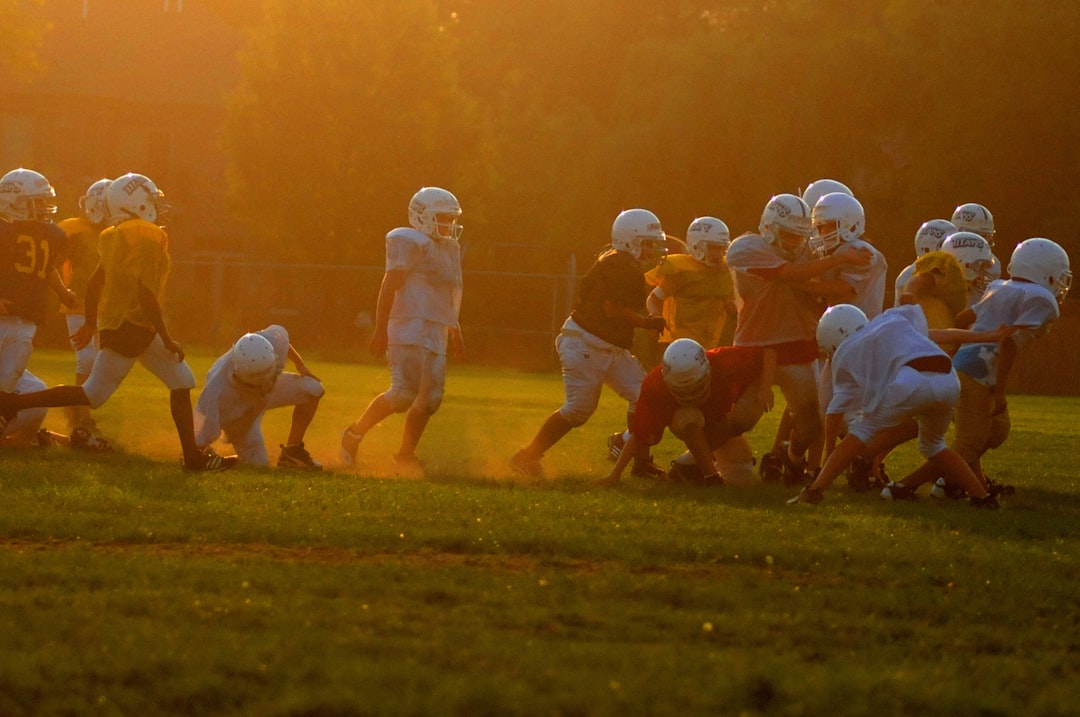Physical activity is a cornerstone of healthy development for children, playing a crucial role in their physical, mental, and emotional well-being. Engaging in regular exercise helps children build strong bones and muscles, maintain a healthy weight, and improve cardiovascular fitness. The Centers for Disease Control and Prevention (CDC) recommends that children aged 6 to 17 years should engage in at least one hour of moderate to vigorous physical activity each day.
This level of activity not only supports physical health but also enhances motor skills, coordination, and overall physical literacy, which are essential for lifelong fitness. Moreover, the benefits of physical activity extend beyond the physical realm. Regular exercise has been shown to improve mood and reduce feelings of anxiety and depression in children.
When kids engage in physical activities, their bodies release endorphins, often referred to as “feel-good” hormones, which can lead to improved emotional states. Additionally, participating in sports or physical activities can foster social connections, helping children develop friendships and learn teamwork skills. These social interactions are vital for emotional development and can contribute to a child’s sense of belonging and self-worth.
Key Takeaways
- Regular physical activity is crucial for kids’ overall health and development
- Consider your child’s interests, abilities, and personality when choosing a sport for them
- Team sports can teach children important life skills such as teamwork, communication, and resilience
- Encourage kids to stay active through activities like dancing, hiking, or playing outdoor games
- Lead by example and make fitness a fun and positive experience for kids
Choosing the Right Sport for Your Child
Selecting the appropriate sport for a child can be a nuanced process that takes into account their interests, abilities, and personality. It is essential to consider what excites your child; some may thrive in individual sports like swimming or gymnastics, while others may prefer the camaraderie of team sports such as soccer or basketball. Observing your child’s natural inclinations can provide valuable insights into what might resonate with them.
For instance, if a child enjoys running around the playground, they may find joy in track and field or soccer. Another critical factor is the child’s physical capabilities and developmental stage. Some sports require specific skills or levels of coordination that may not align with a child’s current abilities.
It is important to introduce them to various activities to gauge their interests and strengths without overwhelming them. For example, a child who shows an affinity for climbing might excel in rock climbing or gymnastics, while another who enjoys strategy and planning might find satisfaction in sports like chess or martial arts. Ultimately, the goal is to find a sport that not only aligns with their interests but also encourages them to stay active and engaged.
Benefits of Team Sports for Children

Team sports offer a unique set of advantages that can significantly impact a child’s development. One of the most notable benefits is the opportunity to learn teamwork and collaboration. In a team setting, children must communicate effectively, share responsibilities, and work together towards a common goal.
These experiences teach valuable life skills that extend beyond the playing field, such as conflict resolution and the ability to appreciate diverse perspectives. For instance, a child who plays soccer learns not only how to pass the ball but also how to support teammates and celebrate collective achievements. Additionally, participating in team sports can enhance a child’s sense of belonging and community.
Being part of a team fosters friendships and social bonds that can last a lifetime. Children learn to rely on one another, creating a support system that can be particularly beneficial during challenging times. This sense of camaraderie can also boost self-esteem; when children feel accepted and valued by their peers, they are more likely to develop a positive self-image.
Furthermore, the shared experiences of winning and losing together can teach resilience and perseverance—qualities that are essential for success in all areas of life.
Fun and Creative Ways to Stay Active
| Activity | Description | Benefits |
|---|---|---|
| Dance Party | Put on your favorite music and dance around your living room | Improves mood, cardiovascular health, and coordination |
| Obstacle Course | Create a course in your backyard or living room using household items | Enhances agility, problem-solving skills, and creativity |
| Scavenger Hunt | Hide items around your house or neighborhood and search for them | Encourages teamwork, critical thinking, and physical activity |
| Yoga for Kids | Engage in child-friendly yoga poses and stretches | Improves flexibility, balance, and mindfulness |
Keeping children active doesn’t always have to involve structured sports or traditional exercise routines. There are numerous fun and creative ways to incorporate physical activity into their daily lives. For instance, families can organize scavenger hunts that require kids to run around the neighborhood or local park searching for specific items.
This not only gets them moving but also encourages exploration and problem-solving skills. Dance parties at home can also be an excellent way for kids to express themselves while getting their heart rates up; simply turning on some music and letting loose can provide an enjoyable workout. Outdoor activities such as hiking, biking, or even gardening can also promote physical fitness while allowing children to connect with nature.
For example, taking a family bike ride through scenic trails not only provides exercise but also fosters family bonding time. Additionally, incorporating games like tag or capture the flag into playtime can make physical activity feel less like a chore and more like an adventure. By presenting movement as an enjoyable part of daily life rather than a task, parents can instill a lifelong love for being active.
How to Encourage a Love for Fitness in Kids
Instilling a love for fitness in children requires a multifaceted approach that emphasizes enjoyment rather than obligation. One effective strategy is to model an active lifestyle yourself; children often emulate their parents’ behaviors. When they see adults engaging in regular physical activity—whether it’s jogging, cycling, or participating in group classes—they are more likely to adopt similar habits.
Sharing your own fitness journey with them can also inspire curiosity and motivation. Another way to encourage fitness is by providing opportunities for exploration without pressure. Allowing children to try various activities without the expectation of competition or mastery can help them discover what they genuinely enjoy.
Enrolling them in different classes—such as martial arts, dance, or swimming—can expose them to diverse forms of movement. Celebrating their efforts rather than focusing solely on outcomes reinforces the idea that being active is about personal enjoyment and health rather than just winning or losing.
The Role of Sports in Building Confidence and Leadership Skills

Engaging in sports can significantly contribute to building confidence in children. As they learn new skills and improve their performance over time, they gain a sense of accomplishment that boosts their self-esteem. For instance, mastering a difficult gymnastics routine or scoring a goal in soccer can provide children with tangible evidence of their capabilities.
This newfound confidence often transcends the sports arena, positively influencing other areas of their lives such as academics and social interactions. Moreover, sports provide an excellent platform for developing leadership skills. Children often have opportunities to take on leadership roles within their teams—whether it’s being appointed as a captain or simply encouraging teammates during practice.
These experiences teach them how to motivate others, communicate effectively, and make decisions under pressure. For example, a child who leads their basketball team during a game learns how to strategize while considering the strengths and weaknesses of their teammates. Such skills are invaluable as they navigate various social situations throughout their lives.
Safety Tips for Kids Engaging in Sports
While sports offer numerous benefits, ensuring safety during participation is paramount. Parents should prioritize proper equipment tailored to the specific sport; this includes helmets for cycling or skateboarding, shin guards for soccer, and appropriate footwear for various activities. Ensuring that children wear the right gear not only protects them from injuries but also instills good habits regarding safety practices.
Additionally, it is crucial to educate children about the importance of warming up before engaging in physical activity. A proper warm-up routine helps prepare their muscles and joints for exertion, reducing the risk of strains or sprains. Teaching kids about hydration is equally important; they should understand the need to drink water before, during, and after exercise to prevent dehydration.
Finally, parents should encourage open communication about any discomfort or pain experienced during activities so that issues can be addressed promptly.
Finding the Balance Between Fun and Competition in Kids’ Sports
Striking the right balance between fun and competition in children’s sports is essential for fostering a positive experience. While competition can motivate kids to improve their skills and strive for excellence, it should never overshadow the enjoyment of playing the game itself. Parents and coaches should emphasize personal growth over winning at all costs; this approach helps children appreciate their progress while maintaining a love for the sport.
Creating an environment where fun is prioritized can involve incorporating games into practice sessions or celebrating participation rather than just victories. For example, organizing friendly scrimmages where everyone gets equal playing time allows children to enjoy the game without the pressure of competition weighing heavily on them. By focusing on teamwork, skill development, and enjoyment rather than solely on outcomes, parents can help cultivate a lifelong passion for sports that remains rooted in fun rather than stress or anxiety associated with competition.
FAQs
What are the benefits of sports for kids?
Sports for kids offer numerous benefits, including improved physical health, enhanced social skills, increased self-esteem, and the development of important life skills such as teamwork and discipline.
At what age can kids start participating in sports?
Children can start participating in sports as early as 3 or 4 years old, with age-appropriate activities and games that focus on developing fundamental movement skills.
What are some popular sports for kids to participate in?
Popular sports for kids include soccer, basketball, baseball, gymnastics, swimming, tennis, martial arts, and track and field.
How can parents support their kids’ involvement in sports?
Parents can support their kids’ involvement in sports by encouraging them to try different activities, providing transportation to practices and games, and being positive and supportive spectators.
What are some safety considerations for kids participating in sports?
Safety considerations for kids participating in sports include wearing appropriate protective gear, staying hydrated, warming up and stretching before physical activity, and following proper technique to prevent injuries.
How can kids develop a love for sports and physical activity?
Kids can develop a love for sports and physical activity by having fun and positive experiences in sports, being exposed to a variety of activities, and receiving encouragement and support from parents and coaches.
